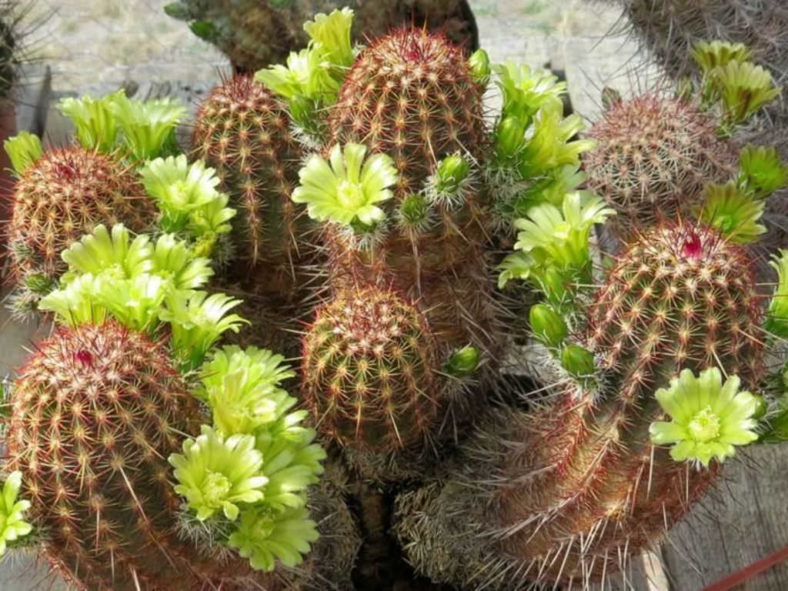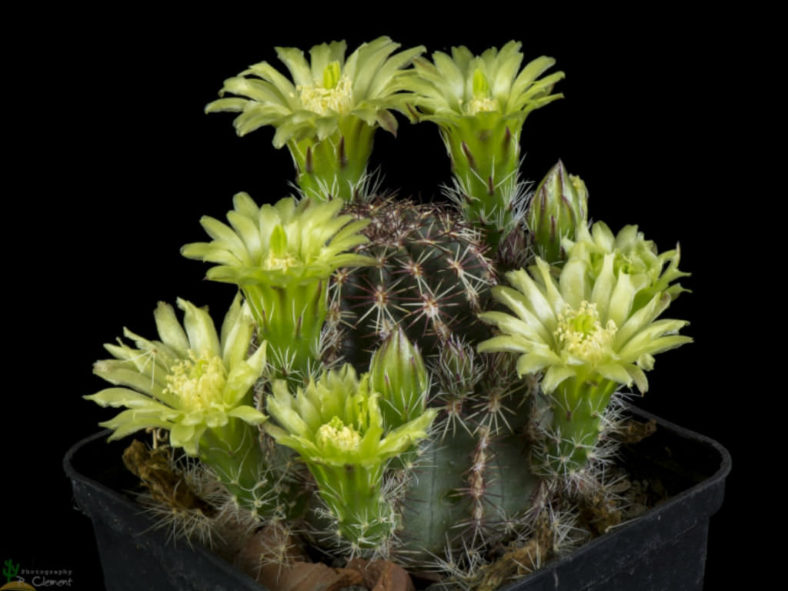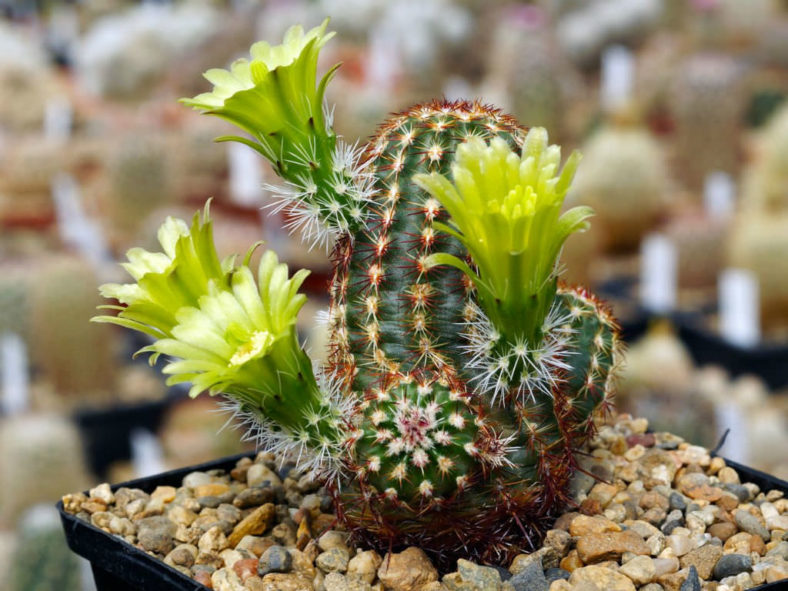Scientific Name
Echinocereus viridiflorus Engelm.
Common Name(s)
Nylon Hedgehog Cactus, Small-flowered Hedgehog Cactus, Small-flower Hedgehog Cactus, Green Pitaya, Green-flowered Pitaya, Green-flower Pitaya, Green-flowered Torch Cactus, Green-flower Torch Cactus, Green Hedgehog, Green-flower Hedgehog Cactus, Gold-spine Hedgehog Cactus, Golden Spine Hedgehog, Varied Hedgehog, Varied Hedgehog Cactus
Synonym(s)
Cereus viridiflorus, Echinocactus viridiflorus, Echinocereus chloranthus, Echinocereus standleyi
Scientific Classification
Family: Cactaceae
Subfamily: Cactoideae
Tribe: Pachycereeae
Genus: Echinocereus
Description
Echinocereus viridiflorus is a small cactus with spherical or cylindrical stems with 6 to 18 ribs lined with areoles that bear clusters of spines. It usually grows solitary or rarely can form a clump of up to 12 stems. The stems can grow up to 12 inches (30 cm) and 3.6 inches (9 cm) in diameter. The spines are purplish, red, yellow, white, or bicolored and often have darker tips. They are straight or slightly curved, sometimes pectinately arranged, measuring up to 1 inch (2.5 cm) in length. Each areole can bear 12 to 38 radial and up to 17 central spines.
The flowers are funnel-shaped and have tepals in shades of yellow, brown, green, or occasionally red, with darker reddish mid stripes. They appear in spring and can reach up to 1.4 inches (3.5 cm) in length and 1.2 inches (3 cm) in diameter.

Hardiness
USDA hardiness zones 6a to 11b: from −5 °F (−20.6 °C) to 50 °F (+10 °C).
How to Grow and Care
If you can grow other globular cactus successfully, you can most likely grow Echinocereus well. One of the key success factors is avoiding any hint of wet soil. Because their root systems are weak, they are especially prone to root rot, eventually killing your plant. Otherwise, they thrive on a program of intense, bright light, little water, and a steady diet of light fertilizer. These cacti are vulnerable to mealybugs and aphids.
Echinocereus are slow-growing cacti that should only need repotting every other year or so. You can prolong repotting by removing plantlets and potting them in their pots. When repotting a cactus, remove it from its pot and remove any clumped soil. These plants tend to be shallow-rooted with weak root systems, so take care not to damage their roots.
See more at How to Grow and Care for Echinocereus.
Origin
Echinocereus viridiflorus is native to the central and south-central United States and northern Mexico.
Links
- Back to genus Echinocereus
- Succupedia: Browse succulents by Scientific Name, Common Name, Genus, Family, USDA Hardiness Zone, Origin, or cacti by Genus
Photo Gallery
Click on a photo to see a larger version.



